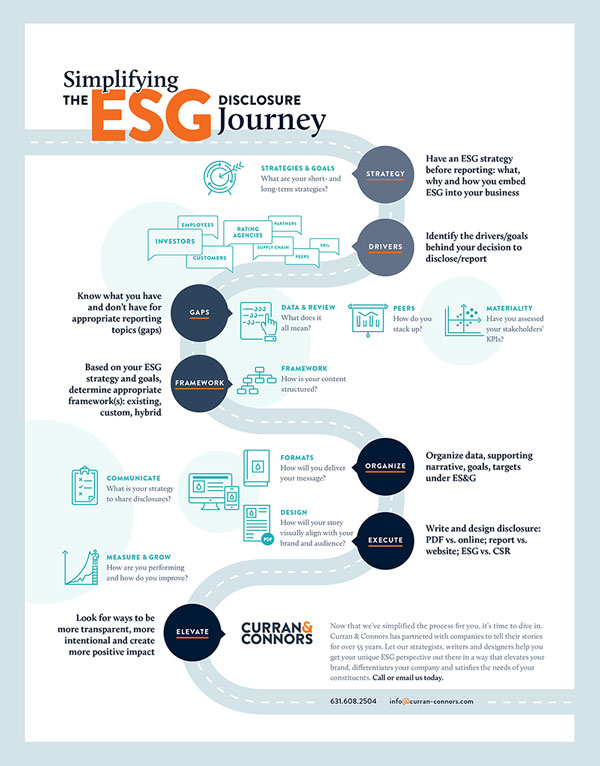You have been challenged with communicating your organization’s efforts and commitments around environmental, social and governance-related (ESG) risk mitigation while looking for opportunities to create impact and value in these areas. Providing clear solutions to determine and address your unique ESG disclosure priorities is not an easy task. Neither is figuring out the best format to deliver your story.
In an effort to simplify this process, we put together a list of 7 steps to help simplify the ESG disclosure journey. These steps take a targeted and pragmatic approach to uncovering, measuring and communicating key priorities, as well as ensuring your messages have the best chance of being received.
Step 1. Strategy
Have an ESG strategy before reporting: what, why and how you embed ESG into your business.
Step 2. Drivers
Identify the drivers/goals behind your decision to disclose/report.
Step 3. Gaps
Know what you have and don’t have for appropriate reporting topics (gaps).
Step 4. Framework
Based on your ESG strategy and goals, determine appropriate framework(s): existing, custom, hybrid.
Step 5. Organize
Organize data, supporting narrative, goals, targets under ES&G.
Step 6. Execute
Write and design disclosure: PDF vs. online; report vs. website; ESG vs. CSR.
Step 7. Elevate
Look for ways to be more transparent, more intentional and create more positive impact.
Now that we’ve simplified the process for you, it’s time to dive in. Whether you’re an ESG pro and only need design and layout assistance, or you’re new to ESG reporting and need help determining where to start, referencing these steps will keep you on course and help take your ESG disclosure efforts to the next level.
Curran & Connors is here to help throughout the ESG journey. If you have any questions, please connect with us.


